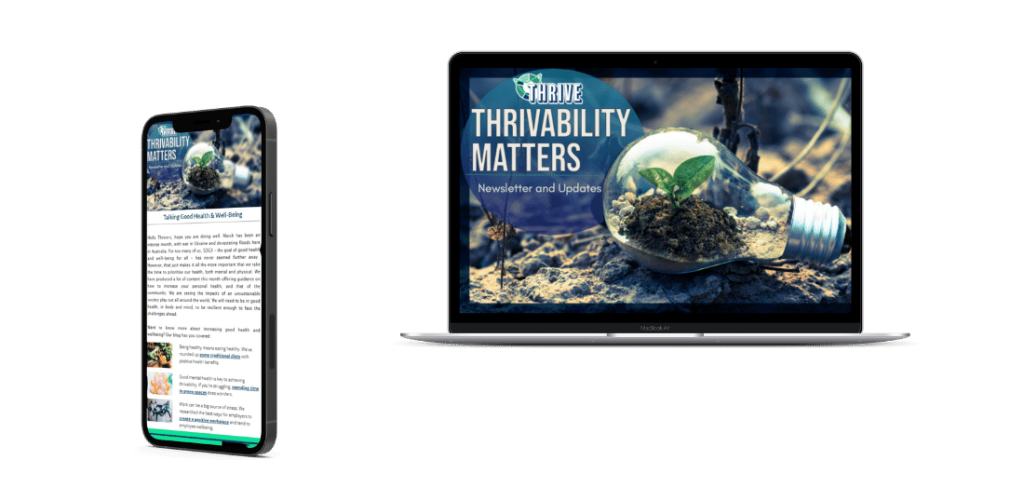The Triple Bottom Line (TBL) theory emphasises ‘People’ and ‘Planet’ before ‘Profits’. This theory has been adopted by many organisations worldwide. It is fair to say that businesses flourish only when both people and the planet are thriving (Greenpath, 2017). Achieving sustainability means working holistically towards a world where wellbeing is dominant.
The UN has set goals for Sustainable Development (aka the SDGs) that form the core of the 2030 agenda. The 17 SDGs serve as a blueprint for achieving holistic sustainability globally and recognise the need for strategies that not only target a certain class of problems, but cater to a wide range of issues. This includes issues such as ending poverty and improving individual health. So, If one SDG can be achieved as a result of targeting another SDG, and vice-versa, does this mean they are interconnected?
The ‘Wedding Cake’ Model
In 2016, Prof. Johan Rockström, (Executive Director of Stockholm Resilience Centre, and Chairman of the EAT Foundation‘s Advisory Board) along with Pavan Sukhdev, (Founder and CEO of Gist Advisory) gave a presentation at the EAT forum. EAT is a science-based global platform that works towards the transformation of food systems. These two figures illustrated the SDGs in a structured format known as the ‘Wedding Cake’ Model, embedding the notion that the 17 UN SDGs can be integrated. Rather than looking at the goals as separated, the speakers highlighted how groups of SDGs align with the biosphere at one layer of the ‘wedding cake’, society at another, and the economy at another.
However, one major risk identified by Rockström & Sukhdev is that policymakers and organisations could end up focusing on some goals and neglecting others. The ‘wedding cake’ model shows how all the SDGs are interconnected and therefore all important priorities.
Source: Stockholm Resilience Centre on Youtube.
Achieving Sustainability with ‘a New Lens’
The UN SDGs are a unifying plan for sustainable development. Within the SDGs there are many distinct targets to achieve. This is to say, in total there are 17 Goals and 169 targets. The goals include ‘No Poverty, Zero Hunger‘, ‘Peace, Justice & Strong Institutions‘, and ‘Partnerships for Goals’. Each SDG is treated as essential, so initiatives in every domain should be encouraged in creating a fulfilling future.
The SDGs represent a comprehensive road map. Since their inception in 2015, it is now not just about eliminating poverty and creating global equity, but recognising the limits of the earth’s biosphere with 17 non-negotiable goals. We have one generation to transition to a fossil fuel-free and sustainable world.
Sustainability and Food
Rockström and Sukhdev are aligned with the goals. However, they warn that progress towards the goals needs to occur on a stable and resilient planet, as we are reaching the limit of the biosphere. They determine that ‘food’ is the common factor that connects with every other element. Food is integral to aspects of wellbeing including health, agriculture, economy, poverty, and equity. The three defining layers of the ‘Wedding Cake’ model are economy, society, and biosphere- we have to achieve all of the goals that form the layers together.
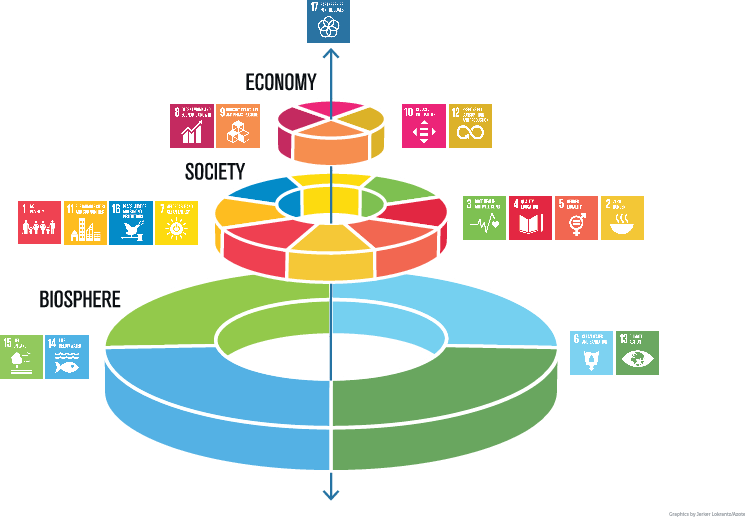
Source Stockholm Resilience Centre.
The Interconnections of the ‘wedding cake’ model layers
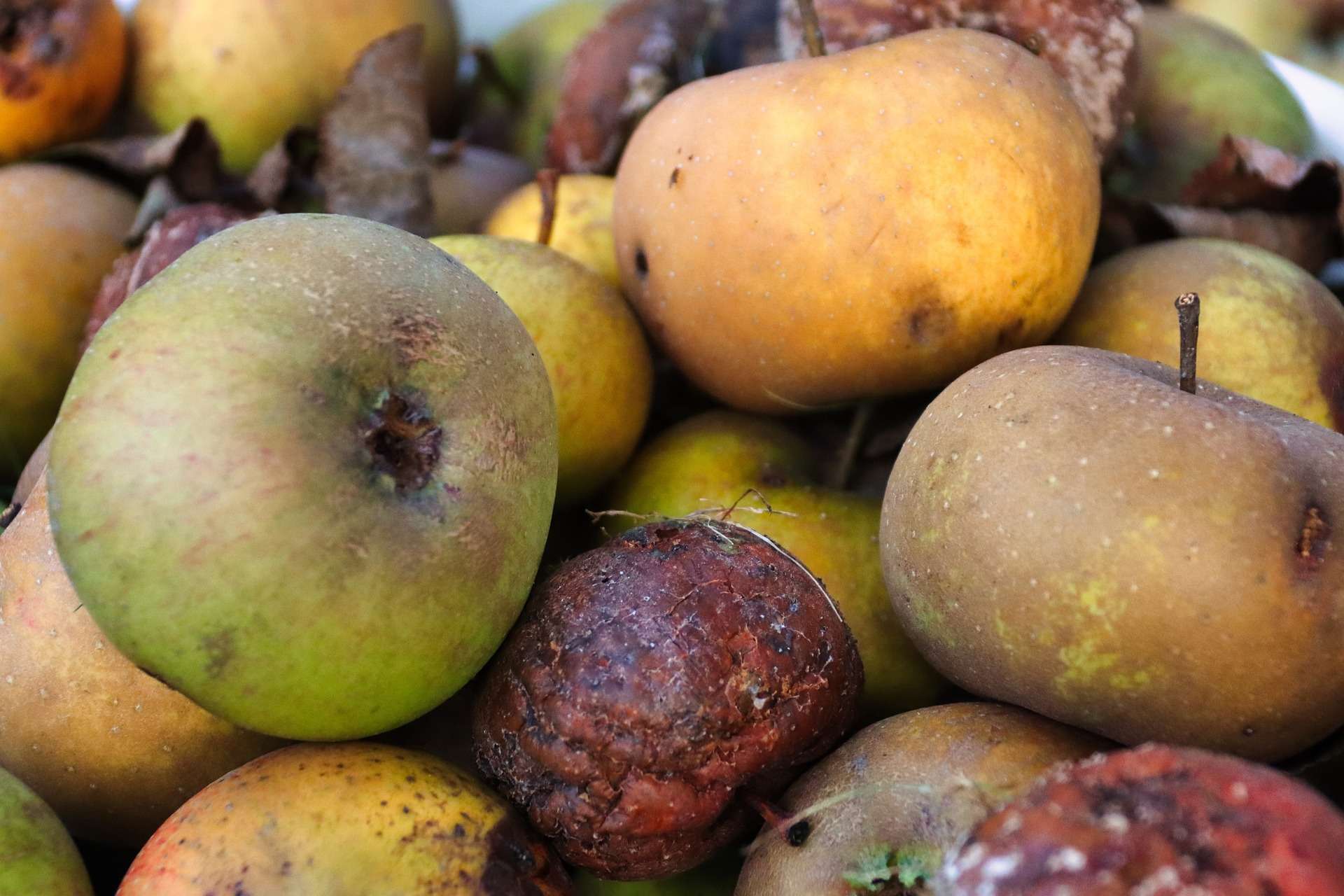
Frankly, agriculture and climate goals are linked. Jointly, these are linked to health goals. Global waste (SDG 12) in the food sector comprises nearly one-third of all food. At the same time, millions of people are starving on other parts of the planet (SDG 2) and resources are drained. Additionally, due to food disposal in landfills (SDG 11 & 13), the massive climate impact of Greenhouse Gas Emissions from food is highly undesirable. Similarly, excessive consumption of food (SDG 12) leads to poor health. Clearly food connects to many issues, including many other SDGs, so changing food systems are of paramount importance.
There are several benefits to transitioning to a plant-based diet, including better animal welfare (SDG 15). Animal agriculture requires much more water than crop farming (SDG 6). Plant-based diets also promote good health by eliminating the consumption of processed meat (SDG 3).
At the same time, because Africa grows most of the world’s food and women make up the majority of farmers, changing our food systems also addresses issues related to gender equality (SDG 5) while contributing to sustainable development. Agriculture provides jobs to millions of people. Changing our food systems will transform our economy and help to alleviate poverty (SDG 1). If the efforts of farm workers are not compensated with fair wages, we will not be able to meet the goals of SDG 8 – decent work and economic growth. Again, food is therefore paramount to reducing inequalities (SDG 10) and achieving justice (SDG 16).
The future of Food

To conserve a sustainable biosphere, the future of food is all about productivity improvements. On that note, the ocean is an underused reserve in food production (SDG 2). The United Nations suggests that ecological farming in just 2% of the ocean could end world hunger. Recent ground-breaking aquaculture solutions are very conducive to sustainability (SDG 9). For example, the cultivation of salt-tolerant plants and fish in deep water off of coasts could become a major farming practice.
Furthermore, underwater farming can also reduce irrigation requirements (SDG 6), and help end the use of unsafe fertilisers and pesticides (SDG 12) therefore reducing soil degeneration. Underwater farming will free up land (SDG 15), consequently minimizing ocean pollution (SDG 14). Societies could benefit from new jobs for coastal populations (SDG 8). This target is also key to lifting societies out of poverty (SDG 1). Moreover, the farming of methane-negative crops that balance their carbon production is extremely useful for climate action (SDG 13). As an example, Kenya has identified fisheries and aquaculture as vital sectors to source sustainable food and for job creation (SDG 8 & 9). This was established in its vision towards a blue economy.
As well as this, ocean farming can increase food supplies including protein-rich fisheries (SDG 2), thus handling the increasing demand for protein sources that comes with population growth. Again, this can eliminate malnutrition and promote well-being (SDG 3). This is critical for the younger generations, as falling sick young hinders the education of children (SDG 4). It must be noted that quality education is key to economic empowerment (SDG 8). It is even fundamental to fighting climate change (SDG 13) as it will address the knowledge gap.
Achieving a Sustainable ‘Operating Space’
The global adoption of the 17 SDGs is the first universal and most significant initiative towards achieving sustainability globally. It stresses that there are constraints on the planet and that all humans need to share resources. It is vital to ensure that all living forms can survive and thrive. This period is the beginning of a major recognition of the significance of having resilient ecosystems as an operative space. There will be a fundamental shift in how we view the human-nature relationship. Acknowledging this relationship will be non-negotiable in the global political arena as well as for community building.
Rockström and Sukhdev’s approach recognises that achieving individual goals is not possible without making the Earth’s biosphere a ‘safe operating space’. The agents of change in sustainability need to focus on the biosphere, as we are approaching the limits of its ability to provide for the world’s population.
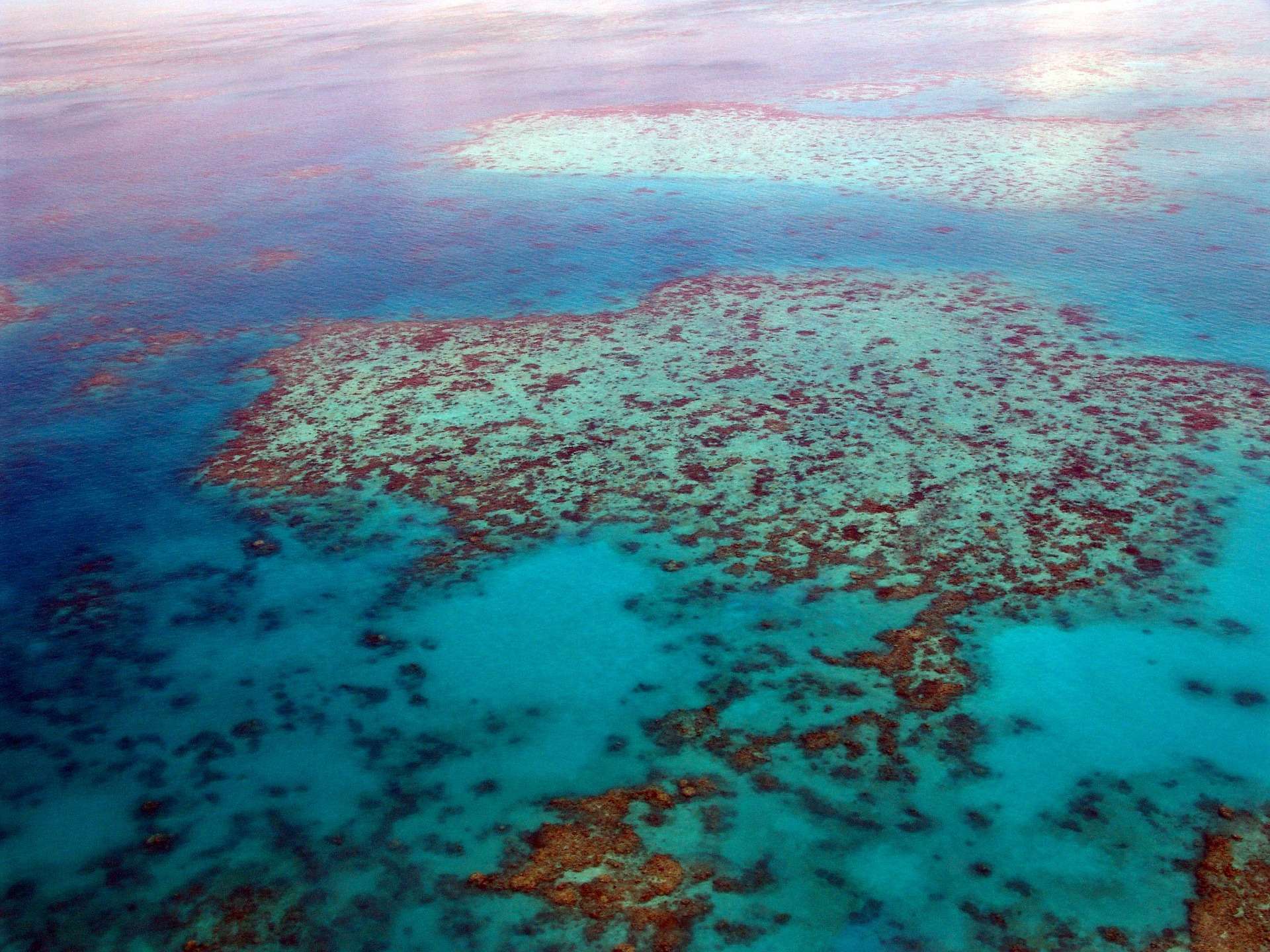
Rockström and Sukhdev have made it clear that food is the common denominator. However, we cannot ensure food security without creating ecological resilience. This is vital to eradicating hunger (SDG 2) and to providing healthy food (SDG 3). By taking responsible actions like stopping over-fishing etc we can achieve sustainability globally in relation to our oceans and create resilient ecosystems.
Oceans are affected by extreme weather conditions like El Nino events. Another significant event to consider might be the mass bleaching event that occurred in the Great Barrier Reef in March 2022. This is the first such occurrence in the cooler phase of La Nina conditions. The risk of losing ecosystem resilience undermines the livelihood of hundreds of millions of people. Also, it creates food insecurity and nutrition deficits. Ocean degradation, pollution, global warming and acidification remain problems that we need to keep our eyes on.
How ‘food’ connects to Climate and Land goals
Agriculture is critically tied to the biosphere. We must adopt sustainable practices to achieve food security (SDG 2) without sacrificing ecological robustness. Global food systems, from production to storage, account for nearly a quarter of greenhouse gas (GHG) emissions. The key GHG of Carbon dioxide (CO2) is at a record high in human history. Human activities have disrupted the natural greenhouse effect which regulated the global temperature from freezing. Global warming is the consequence of releasing more CO2 into the atmosphere. This traps more heat than what can be removed naturally.
Inversely, climate change impacts food production. Such cases include reduced harvests through less rainfall. Heat produced loss of plant pollinators (SDG 15) can also affect crop yields. Rockström and Sukhdev claim that 40% of land is currently being used for growing food.
How ‘food’ connects to Ocean and Water goals
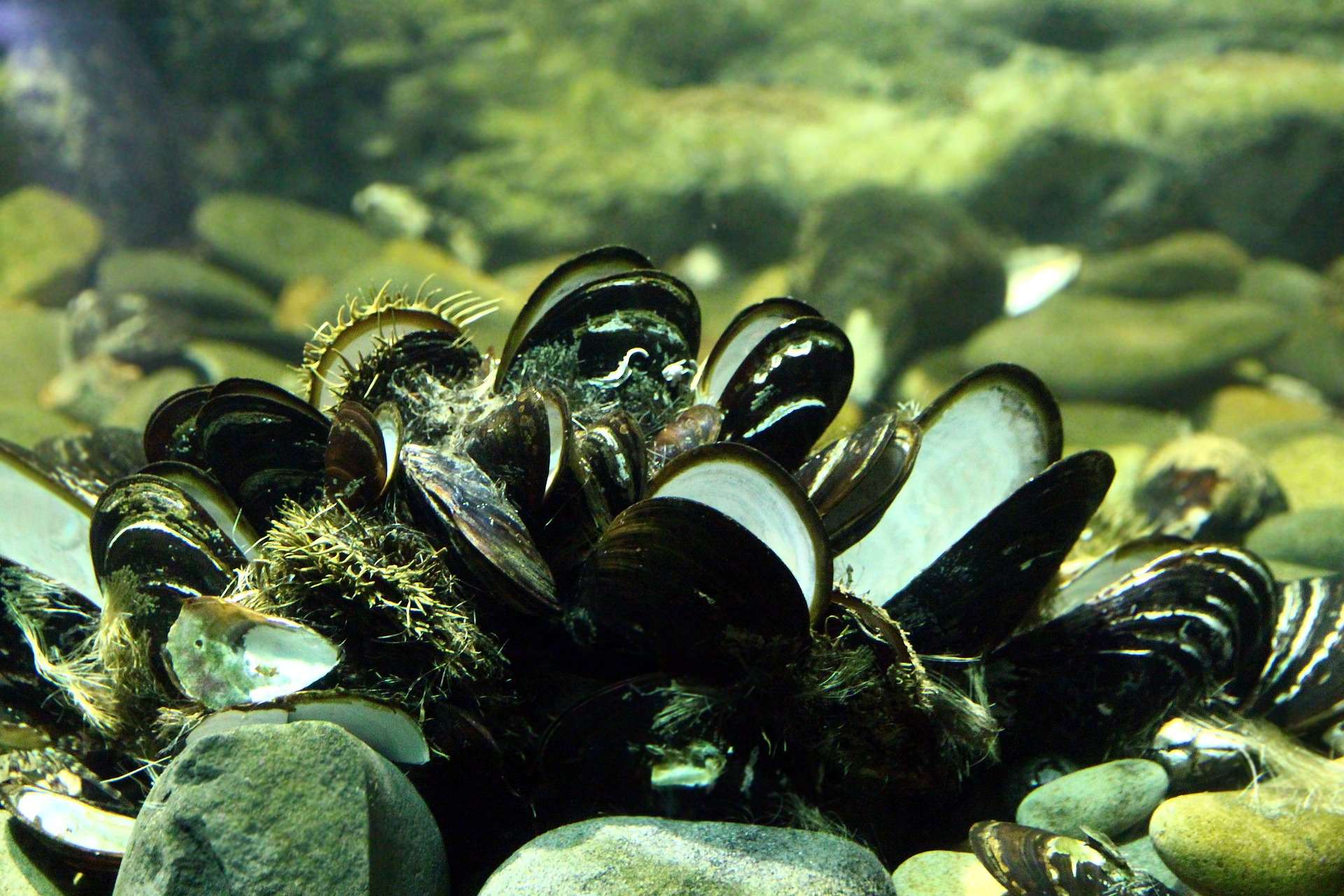
The ocean plays a critical role as a carbon sink in absorbing nearly 25% of human-produced CO2. In the process, it is compromising its pH balance and enduring ocean acidification. Habitats like seagrass beds, salt marshes, and mangroves capture CO2. These habitats have suffered the effects of increased levels of CO2. Mangrove forests stabilize land, and shellfish such as oysters filter contaminants. About 70% of the planet’s exterior is ocean. The ocean can contain fifty times more CO2 than the atmosphere. This means that rising global heat is directly affecting ocean currents. Oceans also play a role in the global heat energy circulation. Clearly, addressing climate change (SDG 13) and creating ocean governance (SDG 14) are indivisible.
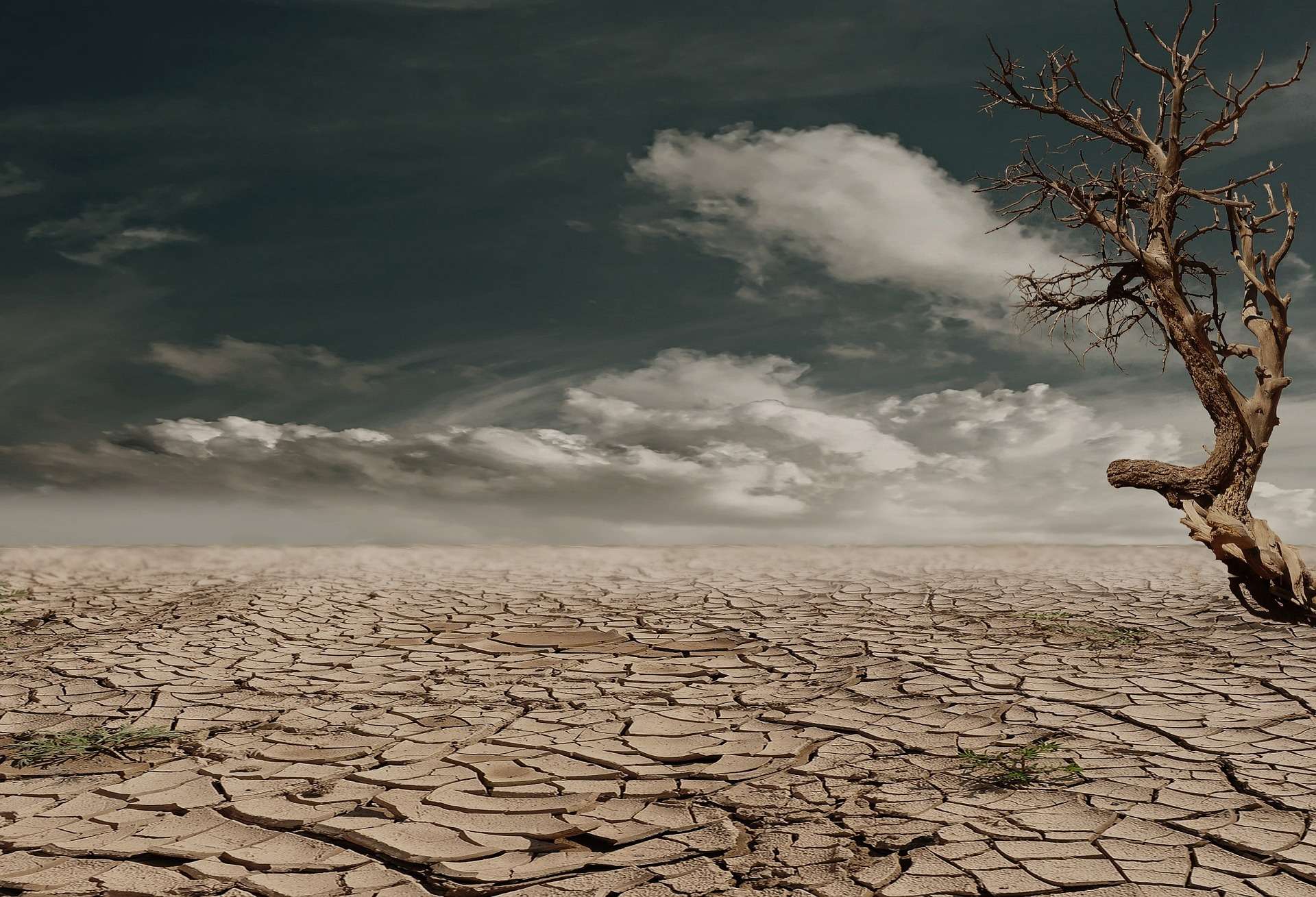
The agriculture sector is the largest consumer of water and climate change means the threat of severe droughts. Water demand is rising because of population growth. At the same time, pollution is spoiling water quality. Ironically, agriculture is a chief polluter of water sources due to pesticide use. Irrigation is pivotal for crop yields and livestock, and failing to manage water resources could threaten food stability (SDG2).
Achieving Sustainability with governance
The only way to approach these issues is by concerted action. A global voluntary effort is a prerequisite for gathering financial investments, sharing scientific knowledge and technological expertise. This is of utmost importance mainly to developing nations if the ambitious 2030 Agenda for Sustainable Development is to succeed.
Governing bodies and corporations worldwide must look at the problem of achieving sustainability through the same lens. Global leaders have progressed mostly as promised. However, a lot more accountability is needed. The climate emergency has put millions of lives in danger and has left global leaders expressing continuous complacency. Climate action warrants the same internationally vigorous and urgent coordinated approach from governing bodies. Transparency and responsibility are vital. Governments must provide access to accurate and timely information for all. Governing bodies need to formulate and implement targeted and holistic policies. Providing guidelines and incentives on safe water use and better agricultural input management are beneficial.
Achieving Sustainability Through partnerships
Governance is central to creating local, national, and international partnerships. Respectively, the 2030 Agenda Partnership Accelerator is an initiative that effectively supports governing bodies and institutions. The aim is to harness the power of partnerships in achieving sustainability goals. The project assesses and educates on constructive cross-cutting multi-party associations. Italy and Ireland aided this mission with their generous donations.
Under this initiative, the Maldives were provided with advisory services to rebuild and progress post-Covid. Importantly, it encouraged the main players in waste management and mental health to explore effective collaborations. The project is about fostering trust in collaborative relationships between scientists and policy-makers (Weiskopf et al., 2022).
It is crucial to find and adopt knowledge-based innovative strategies to achieve sustainable goals. We must incorporate smart technologies and data science. Such examples include tracking crop growth stages, and automating water preservation against pipe drips. These techniques can stop further land extension to meet increased food demands.
Achieving Sustainability Through Keystone Actors
Rockström and Sukhdev recognise ‘keystone actors’ as the major corporations, producers and national agents that influence universal behaviours. Scientists were pivotal in establishing the Seafood Business for Ocean Stewardship initiative with regards to the seafood industry, for instance. This encouraged ten transnational corporations that are keystone actors towards creating sustainable marine ecosystems (Osterblom et al., 2022). The process evolved into a collaboration between these companies who became leaders in ocean stewardship. Scientific knowledge and good faith were the building blocks of this collaboration. As scientists expected, this alliance scaled up tangible outcomes. Thus, the initiative directed a level of transformative change in the industry, through cascading effects.
Meaningful change requires transnational influential actors to work together. For instance, the Indonesian Credit Union Semandang Jaya implemented a financial scheme to support ecological agribusinesses. Initiatives such as this are a testament to the co-benefits of sustainable practices. Such benefits include revenue generation, employment creation, social stability, food safety, climate change moderation, biodiversity preservation, and much more (United Nations Environment Programme, 2021).
Conclusion
Rockström & Sukhdev urge us to view our planet as a non-negotiable priority. The global SDG framework is a wonderful opportunity to handle all of the most pertinent issues together. This undertaking would eliminate the risk of new threats that might stem from tackling SDGs in isolation. Food goals are a prerequisite for our success and are the lens through which we can act on all 17 goals.
Finding funds for nature-based solutions could create almost 20 million jobs by 2030 (SDG 8). Collaborations between scientists, businesses and policy experts are key to achieving sustainability. The United Nations and its main associates (including Generation Unlimited) has launched the Green Jobs for Youth Pact. Green Jobs for Youth was launched at the COP27 in November 2022 in Egypt. The call to action involves creating greener jobs for youth and more Investment into green youth skill development to serve as its foundation.
THRIVE acknowledges that achieving sustainability must happen through collaborative efforts that takes holistic systems thinking into account. To learn more about how The THRIVE Project is researching, educating and advocating for a future beyond sustainability, visit our website. You can follow our informative blog and podcast series, as well as find out about our regular live webinars featuring expert guests in the field. Sign up for our newsletter for regular updates.
